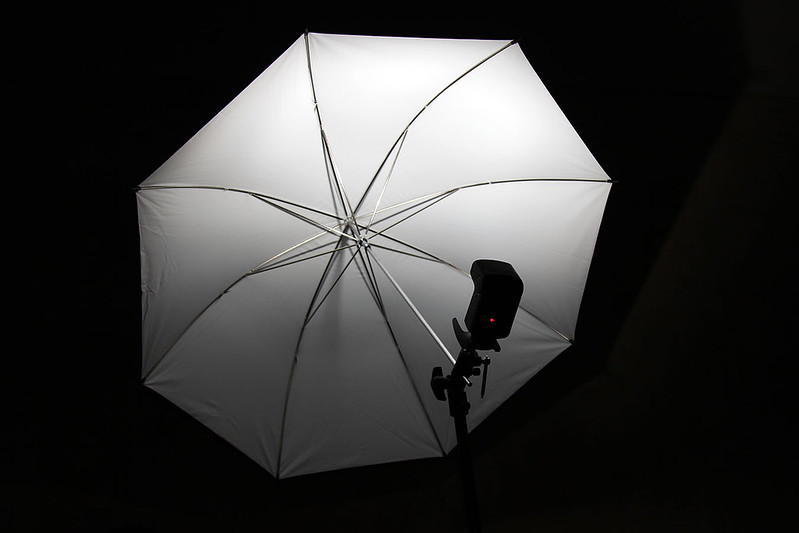Getting started as a photographer or buying new gear leads to a lot of decisions. Educated decisions are always better and choosing a softbox or umbrella is one of the many you’ll have to make. Here’s our insights to help you pick the best one for your photography.

Softbox vs Umbrella - Our Ranking Factors
Both products are built around the same purpose, softening the light. A subject that is our main focus here at LumiQuest. For this comparison we have a whole lot of factors to consider on each side:
• Portability - Is it easy to carry around on location and bring with you on a shoot?
• Ease of setup - Does it take a lot of time to setup and is it complicated?
• Weight - No one wants to carry a whole lot of extra weight, the lightest one wins.
• Ease of use - Does it require a lot of knowledge to use correctly or is it point and shoot?
• Quality of light - How soft is the light quality, does it wrap-around the subject well? Is it even?
• Control of light - Every modifier is built for a specific reason. What reasons are both the umbrella and softbox built for?
• Wind - Overlooked and very important for any outdoor shoots. Which works best here and won't crash your expensive flash to the ground?
• Affordability - We all care how much it costs. If it costs less and works better, isn’t that what you’d want to buy too?
• Reflections - Does it cause a lot of glare and how does it look in a models eyes?
Let’s get to it!
Softbox Vs. Umbrella - Which is best for my photography?
We need to remember here that there are many sizes of both softboxes and umbrellas. This article is written around picking two that are similarly sized. The soft boxes we are talking about are the standard rectangular style. We will be comparing to both shoot through and bounce umbrellas.
Portability and Weight
Depending on the softbox you buy these are typically very portable, but large boxes are less comfortable to bring along and weigh more. This advantage goes to the umbrella in the Large size, and the softbox for smaller applications. Both are easy to carry but softboxes have more material since they both bounce and diffuse the light. Small softboxes that fold flat (like ours here at LumiQuest) are easy to bring with in your backpack and won't take up extra space.
Ease of setup
Generally soft boxes fold open easily and have a velcro attachment on the front panel. Umbrellas open quickly and easily.
Ease of use
The soft box is very easy to use, just point and shoot. Photographic Umbrellas work the same way, and shoot through umbrellas are easy to point because they are less precise. The setup time will be longer with a softbox but it will likely have a longer lifespan as well. The white material also stays inside the softbox keeping it clean.
Quality and Control of Light
This is where the real differences start to show through. Both will create great quality light. In an ideal room with white ceilings and walls the umbrella will create the softest light by bouncing off all available surfaces.
However, the softbox is the clear choice anytime you are in a room with colored walls and ceilings. The light won’t pick up the coloring because it comes out straight at the subject. This important difference can dramatically change a photo. When there are colored walls the light actually reflects the coloring of the walls if it’s bounced and can contaminate the look of the image. Softboxes offer far more precise light control.
The other advantage to the softbox over the umbrella is that you can feather it by pointing it slightly away from the subject. This gives a unique look that can’t be matched.
Wind
Yep, this factor is HUGE. If you’ve ever shot outdoors you’ve probably had a flash blow over in the wind. It’s terrible. The soft box is far less likely to blow over since it won’t scoop the wind.
It also won’t make your flash stand pivot towards the wind. The umbrella works like a ships sail and will rotate with the wind and blow over aggressively. Softbox is the definite winner here but don’t assume you’re safe. Although it's less likely, they do sometimes blow over too.
Affordability
Softboxes can be a bit more expensive but many options are very comparable depending on size. Small soft boxes are about the same price as umbrellas, but larger ones cost double or triple the price. It all depends on what you’re shooting and how far you’ll be. Light softness is relative to how close you are to the subject AND how big your umbrella or soft box is. You can learn more about this here.
Reflections
In certain places that have glass windows and artwork, an umbrella can create a strong reflection. A soft box can be pointed away to remove the reflection. For close up portraits the softbox shape is reflected in peoples eyes. This can either add to or take away from the image depending on the look you are going for. Octagon shaped softboxes are available and have a comparable eye reflection to an umbrella.
The final verdict - Softbox or Umbrella?
Like many things in life, we can’t decide for you. If we could we would definitely choose softboxes since those are one of our main products…. However, we want you to get the product that is perfect for your needs!
Grab a shoot-through umbrella for less precise applications and rooms with white ceilings and walls. It’s going to give you great wrap-around lighting and will be very soft. The soft box won’t bounce by using the walls and ceilings in this situation. The bounce umbrella is a good choice on a budget and works well for quality eye reflections. It’s less controlled however and can cause light contamination.
The softbox is the best choice when you are seeking the most control possible. It will also save you flash power so you get more shots out of each battery charge. If you are shooting outside we would recommend avoiding the umbrella at all costs due to the wind factor. There’s a far greater chance of the flash blowing over and possibly breaking.
Whatever you choose, it’s going to make your light softer and more even when used correctly. Always get it in as close as possible to the subject, and take that flash off-camera whenever you can. Here's a great guide for everything you ever wanted to know about off-camera flash.
Now get out there and shoot! Practice makes perfect and the best photos are the ones that are actually taken.


